Newborn photography is a distinct genre within the realm of photography that’s all about capturing the early days of a baby’s life.
As a photographer, this field offers you the unique opportunity to document the precious moments, expressions, and tiny details that make up the first few weeks of a newborn’s life. Though challenging, the results can be incredibly heartwarming and memorable for both the parents and the photographer.
To be successful in newborn photography, it is essential to be well-prepared and understand the various techniques involved. From choosing the right camera settings to selecting the perfect props, careful planning ensures that you can capture the most beautiful and creative images. Safety is another critical aspect of this genre, which means keeping the baby comfortable and secure throughout the session.
Additionally, mastering the art of posing and editing will enable you to produce professional-quality images that the new parents will cherish for years to come. Whether you are a seasoned photographer looking to expand your portfolio or a beginner wanting to venture into this rewarding niche, newborn photography is a skill that is both creatively fulfilling and in high demand.
Table of Contents
- Preparing for the Photoshoot
- The Photography Session
- Capturing the Perfect Shot
- After the Session
- Frequently Asked Questions
Preparing for the Photoshoot
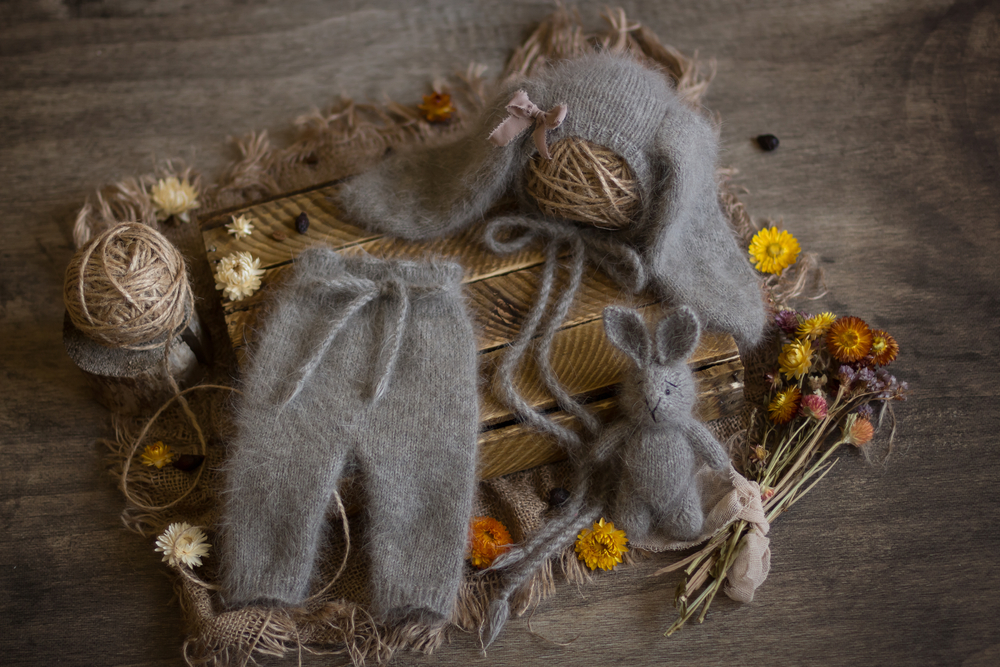
Photo by Pavlova Nataliia via Shutterstock
Planning the Photoshoot
The first step in taking beautiful newborn photos is to plan the shoot. Whether you’re photographing your child or someone else’s, planning ahead ensures you’ll meet the expectations of the photoshoot.
To plan an effective newborn photography session, consider the following:
- Make sure the baby is fed 20-30 minutes prior to the shoot
- Keep the baby awake prior to the shoot so they sleep during the shoot itself
- Have extra clothes, diapers, and other baby goods on hand in case the baby needs changed
- Keep the air temperature in the space where the shoot will be higher than normal so the baby doesn’t get cold
- Gather blankets, toys, props, and so forth for creating a beautiful background for the images
Essential Newborn Photography Gear
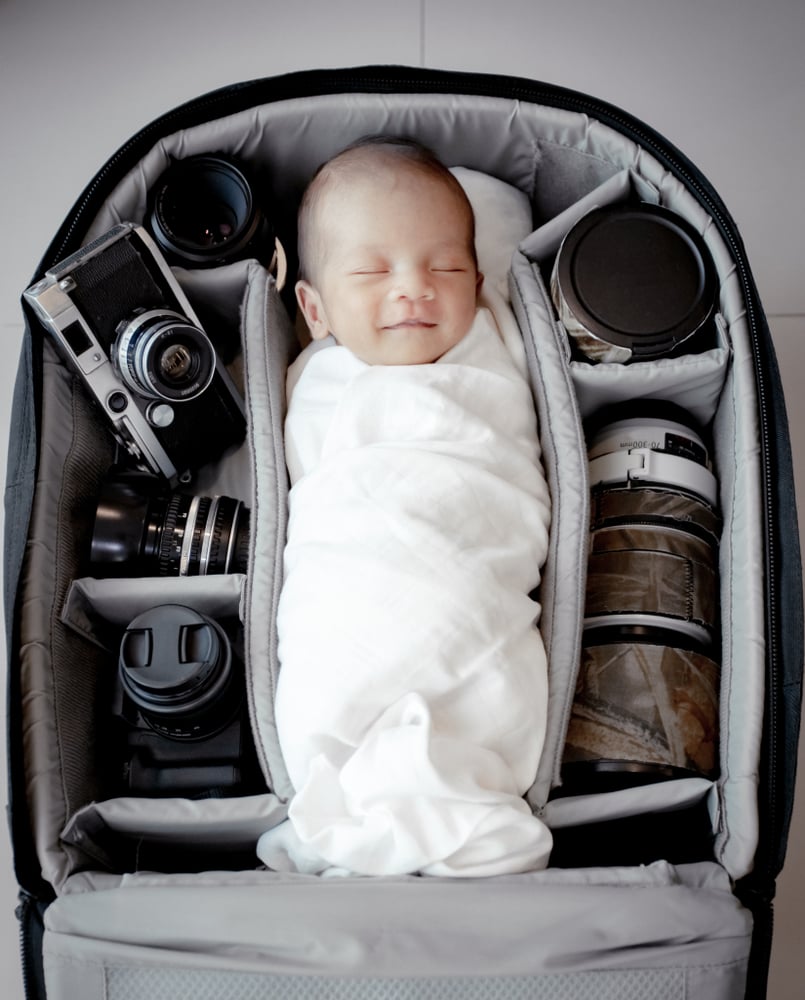
Photo by sippakorn via Shutterstock
Having the right gear and equipment is crucial for capturing high-quality newborn photos. You should use a DSLR or a mirrorless camera with interchangeable lenses to give you the most features and tools to use to create the best images.
You can spend a few hundred dollars on a beginner photography kit or go for a high-end, professional kit that costs several thousand dollars. In between are various mid-range options worth exploring as well. Whatever your budget, set aside money for the following basic items:
- An interchangeable lens camera
- Several lenses for portraiture (prioritize an 85mm f/1.8 first)
- A sturdy tripod to keep the camera steady
- Soft lighting equipment, such as a reflector and a diffuser, to achieve balanced lighting
- A variety of comfortable props and blankets for positioning the baby
- A white noise machine or soothing music to keep the baby calm during the session
- A heating pad or warm towels to maintain the baby’s body temperature
The video above by My Big Camera explores correct lighting techniques for newborn photography. When adjusting the lighting in your photos, here are two techniques to consider:
Light modifiers: These tools help soften the light from your continuous light source, creating a more natural and gentle effect. Light modifiers are especially important in newborn photography, as harsh lighting can be unflattering on fragile features.
Continuous light: This type of lighting provides a constant and even illumination throughout the scene, so you can easily adjust your camera settings to achieve the desired outcome without experimenting with flash settings.
By considering and incorporating these planning aspects and essential gear into your newborn photoshoot, you can help ensure a smooth and successful session. You can also find helpful Newborn Photography Tips for Parents to further prepare yourself and your family for this special experience.
The Photography Session
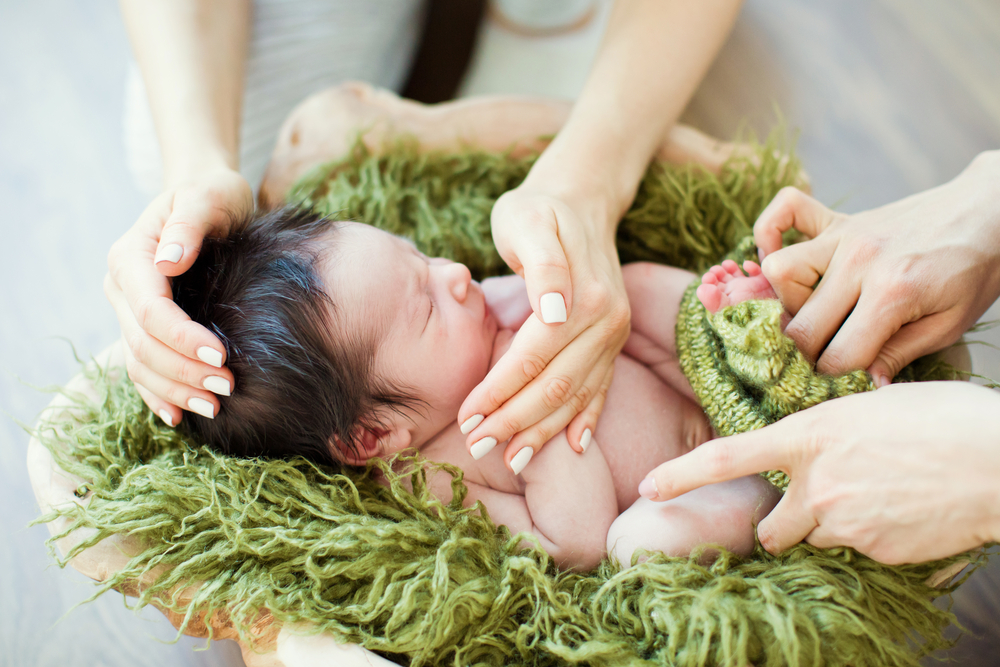
Photo by aprilante via Shutterstock
Setting the Scene for Newborn Photos
As noted earlier, creating a warm and safe environment is crucial when preparing for a newborn photography session. Focus on choosing a location with ample natural lighting and enough space to accommodate all necessary posing pillows and equipment.
A studio setting is often preferred for its controlled environment, allowing for easy adjustments of props, backgrounds, and lighting to accommodate the baby’s needs. While natural lighting is ideal, if it’s not available, utilizing soft, continuous lights can help create a cozy atmosphere.
Safety and Comfort During the Shoot
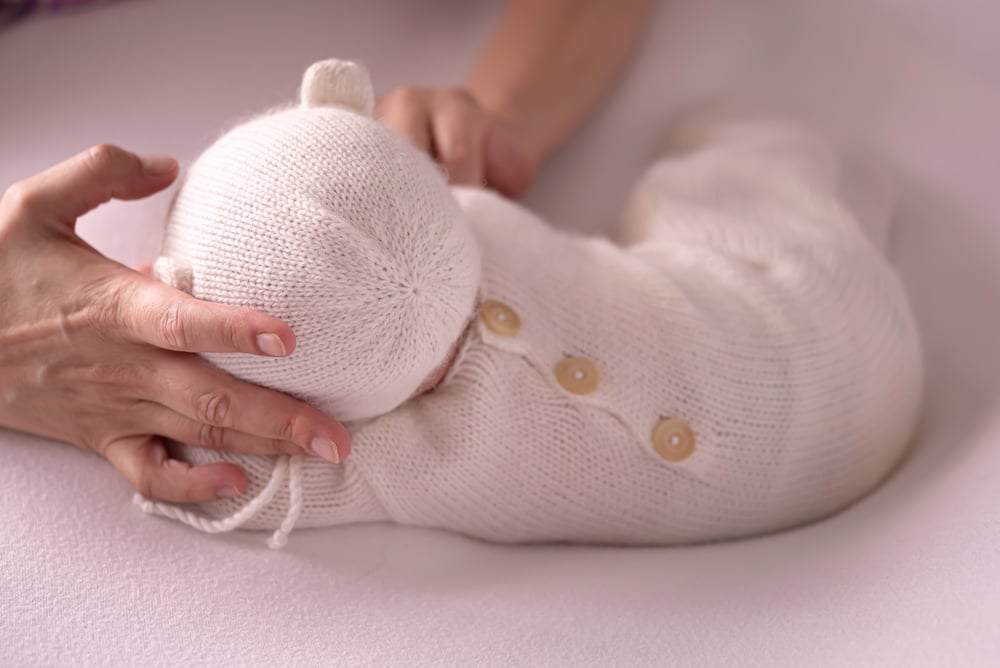
Photo by Yana Rubin via Shutterstock
Ensuring a newborn’s safety and comfort during the photo session is of utmost importance. Keep the room temperature warm and cozy so your baby stays relaxed throughout the session. Consider using a space heater if necessary to maintain a comfortable environment.
Prioritize safety when positioning the baby, such as utilizing posing pillows to cushion and support them in various poses. Never force a pose that seems unnatural or uncomfortable for the baby.
In addition, remember the golden rule of newborn photography: always have a helping hand to assist during the shoot. This extra person can ensure the baby’s safety, assist with posing, and attend to the baby’s needs.
By following these guidelines, you’ll create a comfortable environment for your newborn photography session. Keep the atmosphere warm, prioritize natural lighting, and above all else, ensure your baby’s safety and comfort.
Capturing the Perfect Shot
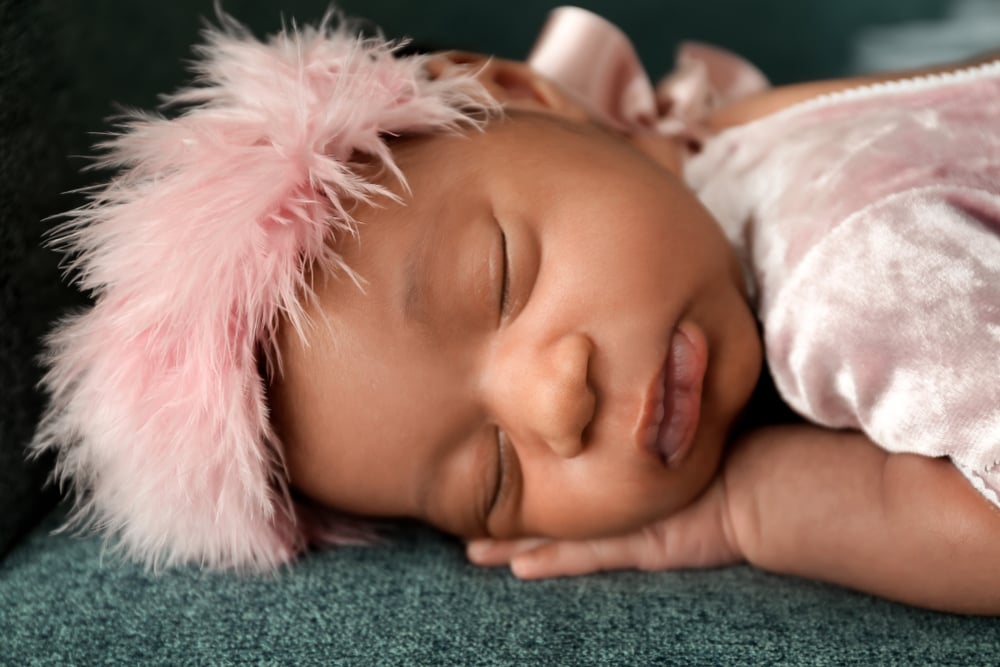
Photo by Aquarius Studio via Shutterstock
Newborn Photography Techniques
In newborn photography, proper techniques are essential to capturing stunning images of your tiny subjects. Remember to prepare a clutter-free environment, focusing on your newborn and ensuring no distractions are in the scene. Find the right moments to take different poses, such as waiting until they are asleep to capture delicate close-up shots of their fingers and toes.
It’s also vital you have patience when working with newborns, as they can be unpredictable and might take time to settle into the ideal pose.
Camera Settings and Equipment
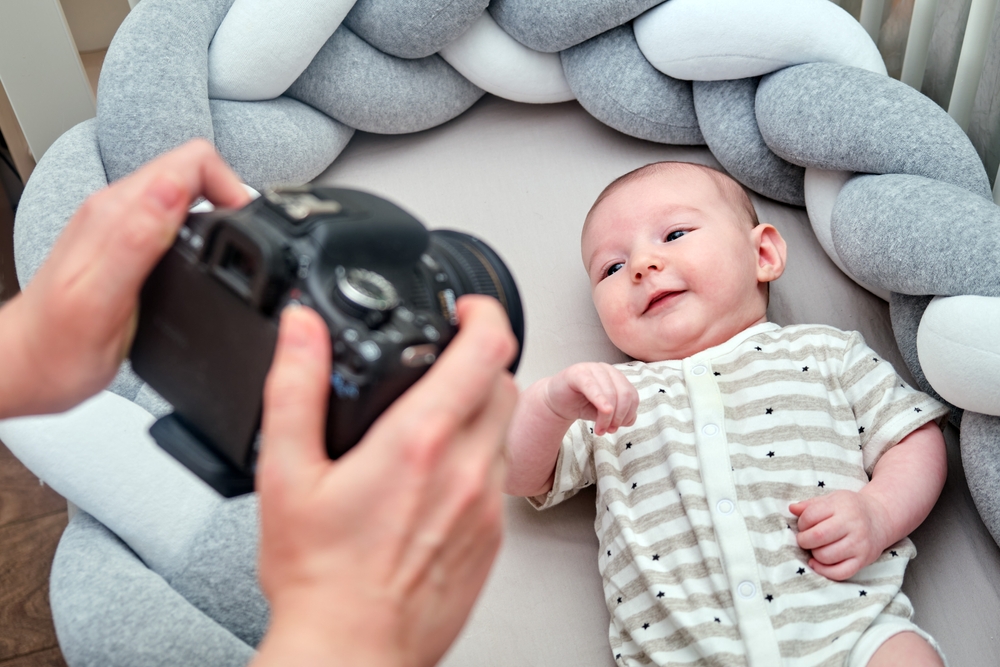
Photo by Zhuravlev Andrey via Shutterstock
As a newborn photographer, you should be familiar with your camera and its settings. First, choose between the two main types of cameras: DSLR (Digital Single-Lens Reflex) or mirrorless. Both are popular among professional photographers, though many photographers have switched to mirrorless due to the technological advancements they offer.
Regardless of your camera choice, it’s crucial to use manual mode to have full control over your photographs. When photographing newborns, consider using a prime lens with a wide aperture to create a soft, blurred background. For quiet, still babies, set your shutter speed to at least 1/160s, and for more active ones, use 1/250s or faster to freeze motion.
Here are some recommended settings for newborn photography:
- Aperture: f/2.8 for a nice shallow depth of field
- ISO: 100-400
- Shutter Speed: 1/160s (quiet babies) or 1/250s (active babies)
These settings, combined with proper lighting and the right choice of lenses, will allow you to capture beautiful images that focus on your newborn subject, providing a memorable experience to the parents.
After the Session
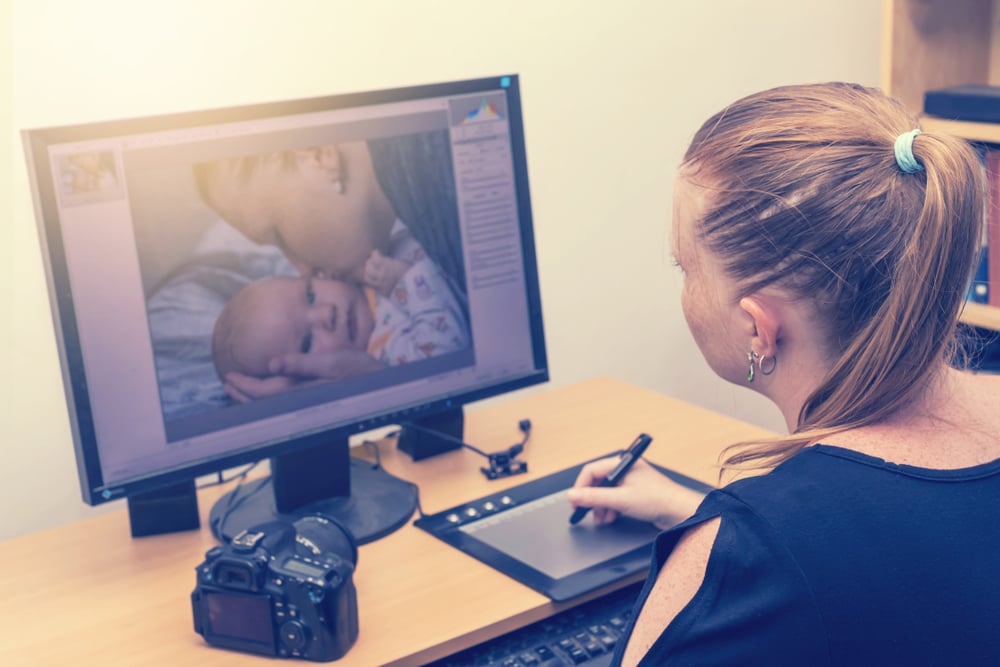
Photo by Frank11 via Shutterstock
After a successful newborn photography session, it’s time to move on to the editing and post-production phase. This stage plays a crucial role in transforming raw images into beautiful, final compositions that the parents will cherish for years to come.
First, carefully sort through the captured images and select the best ones. During this process, identify any photos that may need adjustments in exposure or tweaks in color balance. Pay attention to the textures in your photos, such as the baby’s skin and fabric. Textural details in newborn photography can add an extra level of warmth and character to your images. Get more editing tips in the video below by Mia Landry Images:
Next, consider the impact of depth of field while editing. Creating a shallow depth of field by blurring the background can help emphasize the newborn as the subject and draw the viewer’s attention to the baby’s delicate features.
Be judicious in the use of filters and presets for your newborn photos. Overediting can make the photos look worse, so using a light hand here is often the best way to go. That said, there are many presets for programs like Photoshop that are specifically designed for portraiture that can enhance your images with the click of a button.
Delivering the Final Photos
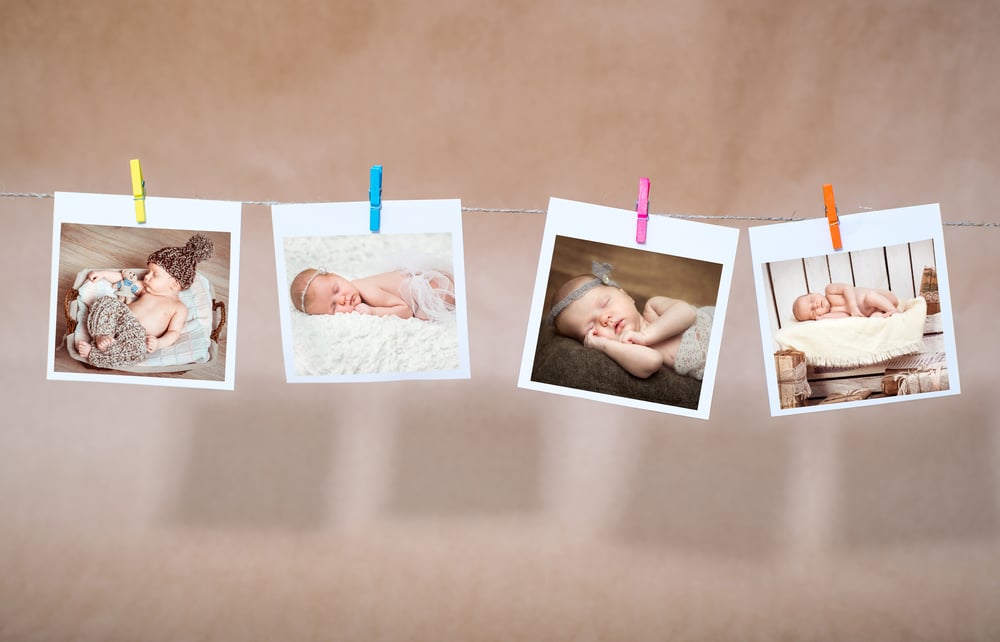
Photo by Tatyana Vyc via Shutterstock
Once you have applied all the necessary edits and enhancements to the selected images, it’s time to deliver the final set of photos to your clients:
Prepare an online gallery with high-resolution images, ensuring they are easy to view and download. Make sure to include a variety of close-ups, macro shots, and wider compositions that capture the baby in various poses.
Offer physical prints or albums for parents who prefer a tangible keepsake. Ensure that your prints are professionally produced and use high-quality materials, as this demonstrates your commitment to providing the best end product.
If you provide additional services or products, such as framed wall art or personalized photo books, present these options to your clients. Subtly remind them that these keepsakes make great gifts for grandparents and other family members.
Remember to maintain a consistent tone of voice and style throughout your post-production and delivery process, showcasing your expertise as a newborn photographer. By focusing on the details, such as carefully edited images and a seamless delivery experience, you can create lasting memories for your clients while enhancing your industry reputation.
Frequently Asked Questions
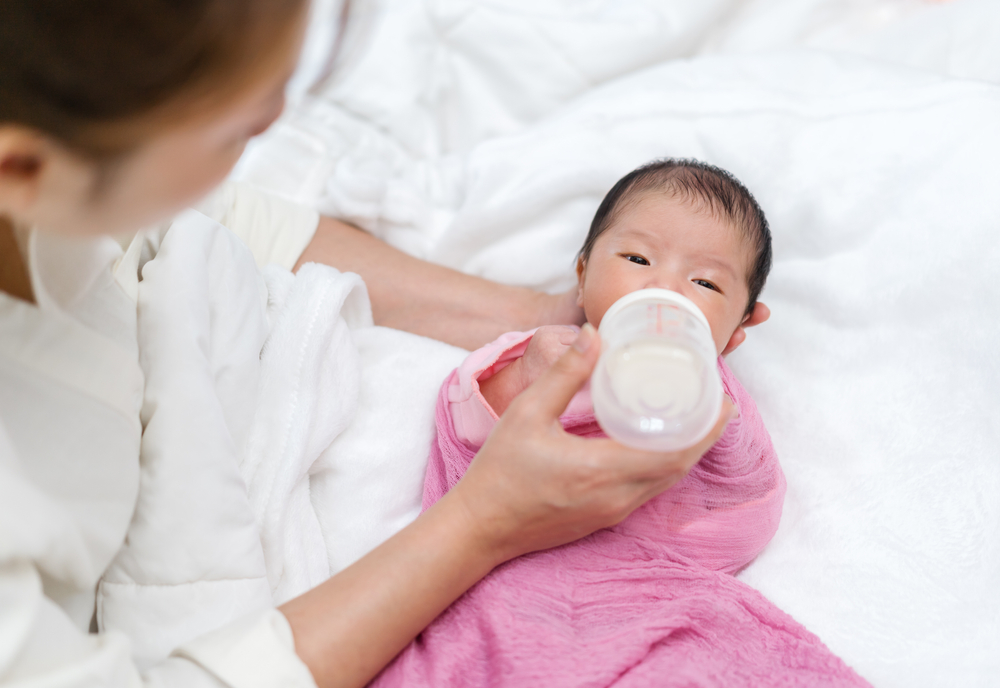
Photo by BaLL LunLa via Shutterstock
How can I prepare my baby for a newborn photography session?
To prepare your baby for a newborn photography session, ensure they are well-fed and comfortable. Gently massage your baby to help them relax and try to keep the room warm. Create a soothing environment by playing soft music or white noise. Keep extra diapers, wipes, and blankets handy in case they are needed during the session.
What is the best age for a baby to have a newborn photo shoot?
The ideal age for a newborn photo shoot is between 4 and 14 days of age. During this time, newborns are still quite flexible, allowing for those adorable, curly poses. They also tend to be sleepier, which helps facilitate the photography session. However, if you’re unable to schedule a session within this timeframe, don’t worry, as beautiful newborn photos can still be captured.
What are some creative ideas for a newborn photography theme?
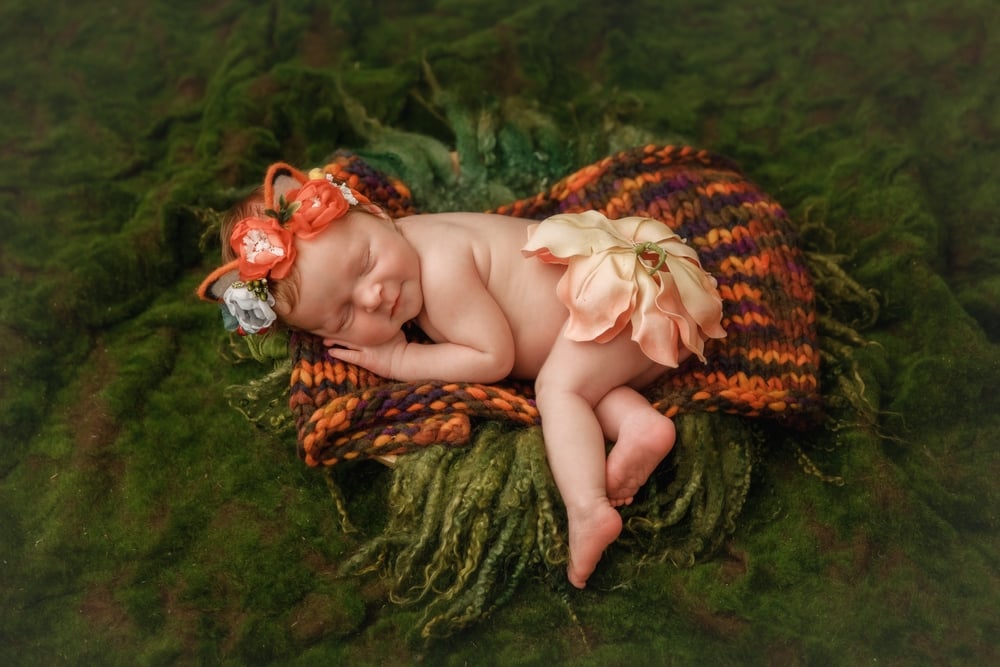
Photo by Tetiana Yablokova via Shutterstock
When planning a newborn photography theme, consider the interests and personalities of your family. You can incorporate elements related to your occupation, hobbies, sports teams, seasonal events, or pop culture. Personalize the session with special touches, such as personalized outfits or sentimental props. Ultimately, the theme should reflect the uniqueness of your family.
Which newborn photography props are safe and comfortable for my baby?
Safety and comfort should always be a priority when selecting props for a newborn photography session. Use soft materials, such as blankets, wraps, and fabrics that will not irritate your baby’s delicate skin. Utilize pillows or small bean bags to provide extra support for specific poses. Avoid using any props that have sharp edges or contain small, detachable parts that could pose a choking hazard.
How long does a typical newborn photography session last?

Photo by paulaphoto via Shutterstock
The duration of a newborn photography session can vary depending on several factors, but in-hospital sessions usually take around 30 minutes. In-home or studio sessions, on the other hand, may take up to 4 hours or more. This is because there may be frequent breaks for feeding, diaper changes, and soothing the baby.
What should my newborn wear for the photo shoot?
For the photo shoot, it’s best to dress your newborn in simple, neutral, and well-fitting clothing to avoid any distractions. Consider attire that showcases your baby’s natural beauty, such as a classic white onesie or delicate knitted outfits. Soft fabrics, such as cotton or linen, are ideal for comfort. Avoid clothing with busy patterns or branding that may detract from the overall aesthetic of the photographs.
Our articles might have affiliate links and the occasional sponsored content, but don’t sweat it – if you buy something, we get a little kickback at no extra cost to you, and we only hype products we truly believe in!
Learn More:
Hero photo by Art_Photo via Shutterstock

